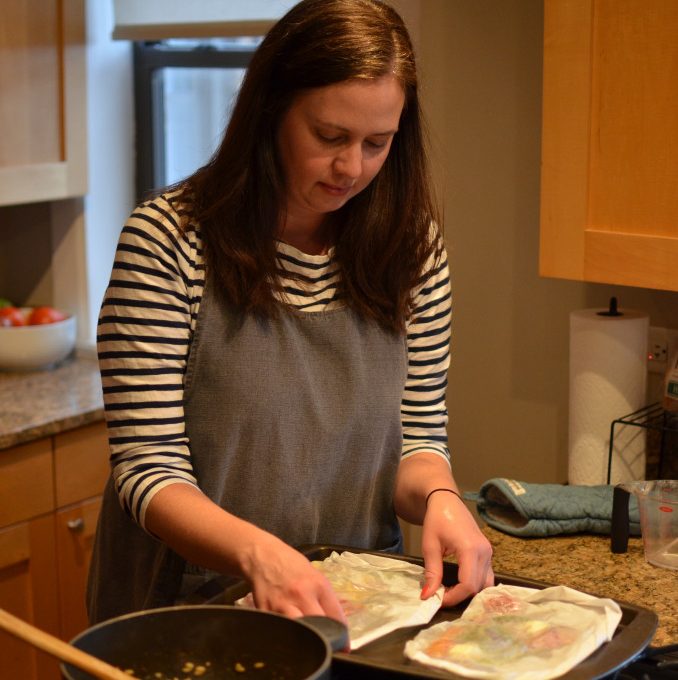Amy Cavanaugh, Chicago Magazine
Amy Cavanaugh is the dining editor at Chicago Magazine.

What is your day-to-day job like as a dining editor?
It’s different from what it was when I first started because of COVID, so I work from home. We’ve been out of the office for a year, last week, so I’m not going downtown, I’m not going to restaurant openings, I’m not going to restaurants. I’m doing a lot of delivery, I’m doing pickup. So, it’s very different on that front. But the work itself hasn’t changed all that much. I still come up with the topics for each issue. We do 11 issues a year, and we do one stand-alone food issue each summer. I come up with story ideas, I assign them to writers, I handle pitches that writers send in. I edit everything that comes in. I write some of it myself as well.
What specific qualities make you a good editor?
Curiosity is a big one. When I’m coming up with story ideas and when I’m editing other writers, I want to find things where I think, ‘This is so cool. I want to know everything I possibly can about this topic.’ So that’s how I approach my own writing. When I do interviews, it’s asking things that might not necessarily make it into the story but really help inform the background of the piece. When I’m editing writers, I think about each thing they say and think, ‘Is there a little bit more we can say about this? Is there an interesting detail that maybe hasn’t quite found its way into the piece yet, but that does exist and that maybe we can get in there in some way?’ Another thing that is really important is empathy. That’s something especially in the past few years that I’m being very conscious of in my relationships with my sources and freelancers and people I work with on staff. Being aware of what other people are going through, that understanding can really go a long way.
How have you taken steps to diversify your food coverage across different ethnic groups?
That’s been one of my goals really since starting, even pre-pandemic, is to diversify the section as much as I possibly can. We’ve also been working on diversifying our writers and that naturally also brings new sources into the magazine. The city is extremely diverse in its dining opportunities, and we need to really present a more holistic view of what dining in Chicago is like. And then also, if you see people who make food you grew up with in the pages of the magazine, you might be more inclined to pick up the magazine and read it and see that there is something for you in there as well.
How do you capture the whole story behind the food?
One way we do that is through art. We make it a point to have at least one story in each table section be a photo of a person. It could be they’re plating dishes or it’s a portrait, but that’s one way to get a face in behind the food. Q&A’s are also a good way to do that. I think chefs, they’re used to talking about the food, but there are so many other things that they can talk about, whether it’s the environmental implications of serving a certain dish or why they’ve chosen to do something in a particular way. We interview chefs for every piece we do, and sometimes I feel like the things you find out aren’t necessarily quite what you were initially going to talk about.
What advice do you have for those looking to pursue a similar career path in editing?
For food editing specifically, eat out as much as you can. This does not have to be the fanciest restaurant in town by any means. Just trying new things is really great. I get asked a lot, ‘How do I break into food writing?’ and I think it’s, write whatever you can. I don’t need potential freelancers to send me five published clips. Instagram captions are fine, a blog is fine, something that shows how you approach telling a story, what your writing style is like. As you’re working to increase your editing skills too, just read other food writing critically. I get all the food magazines, and I’ll read through them and think, ‘This isn’t quite how I would have approached the story, but maybe it works for these reasons.’ Read as much as you can about the other food publications, whether it’s a print magazine or a website.
Chicago magazine offers editorial internship opportunities for college graduates.
— Celia Hegarty '21